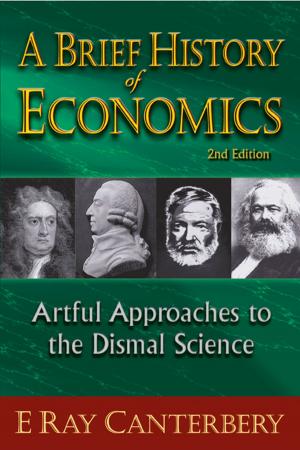Basics of Statistical Physics
Nonfiction, Science & Nature, Science, Physics, Thermodynamics, Quantum Theory| Author: | Harald J W Müller-Kirsten | ISBN: | 9789814449557 |
| Publisher: | World Scientific Publishing Company | Publication: | March 25, 2013 |
| Imprint: | WSPC | Language: | English |
| Author: | Harald J W Müller-Kirsten |
| ISBN: | 9789814449557 |
| Publisher: | World Scientific Publishing Company |
| Publication: | March 25, 2013 |
| Imprint: | WSPC |
| Language: | English |
Statistics links microscopic and macroscopic phenomena, and requires for this reason a large number of microscopic elements like atoms. The results are values of maximum probability or of averaging.
This introduction to statistical physics concentrates on the basic principles, and attempts to explain these in simple terms supplemented by numerous examples. These basic principles include the difference between classical and quantum statistics, a priori probabilities as related to degeneracies, the vital aspect of indistinguishability as compared with distinguishability in classical physics, the differences between conserved and non-conserved elements, the different ways of counting arrangements in the three statistics (Maxwell–Boltzmann, Fermi–Dirac, Bose–Einstein), the difference between maximization of the number of arrangements of elements, and averaging in the Darwin–Fowler method.
Significant applications to solids, radiation and electrons in metals are treated in separate chapters, as well as Bose–Einstein condensation. This revised second edition contains an additional chapter on the Boltzmann transport equation along with appropriate applications. Also, more examples have been added throughout, as well as further references to literature.
Contents:
- Introduction
- Statistical Mechanics of an Ideal Gas (Maxwell)
- The A Priori Probability
- Classical Statistics (Maxwell–Boltzmann)
- Entropy
- Quantum Statistics
- Exact Form of Distribution Functions
- Application to Radiation (Light Quanta)
- Debye Theory of Specific Heat of Solids
- Electrons in Metals
- Limitations of the Preceding Theory — Improvement with Ensemble Method
- Averaging instead of Maximization, and Bose–Einstein Condensation
- The Boltzmann Transport Equation
Readership: Advanced undergraduates, graduate students and academics interested in statistical physics.
Key Features:
- A genuine introduction which assumes only knowledge of elementary quantum mechanics and elementary thermodynamics
- All arguments and calculations are given in great detail enabling the reader to follow every step, no phrases like “it can easily be shown” are used
- Numerous examples, many with explicit solutions, introduce the reader to vital applications
Statistics links microscopic and macroscopic phenomena, and requires for this reason a large number of microscopic elements like atoms. The results are values of maximum probability or of averaging.
This introduction to statistical physics concentrates on the basic principles, and attempts to explain these in simple terms supplemented by numerous examples. These basic principles include the difference between classical and quantum statistics, a priori probabilities as related to degeneracies, the vital aspect of indistinguishability as compared with distinguishability in classical physics, the differences between conserved and non-conserved elements, the different ways of counting arrangements in the three statistics (Maxwell–Boltzmann, Fermi–Dirac, Bose–Einstein), the difference between maximization of the number of arrangements of elements, and averaging in the Darwin–Fowler method.
Significant applications to solids, radiation and electrons in metals are treated in separate chapters, as well as Bose–Einstein condensation. This revised second edition contains an additional chapter on the Boltzmann transport equation along with appropriate applications. Also, more examples have been added throughout, as well as further references to literature.
Contents:
- Introduction
- Statistical Mechanics of an Ideal Gas (Maxwell)
- The A Priori Probability
- Classical Statistics (Maxwell–Boltzmann)
- Entropy
- Quantum Statistics
- Exact Form of Distribution Functions
- Application to Radiation (Light Quanta)
- Debye Theory of Specific Heat of Solids
- Electrons in Metals
- Limitations of the Preceding Theory — Improvement with Ensemble Method
- Averaging instead of Maximization, and Bose–Einstein Condensation
- The Boltzmann Transport Equation
Readership: Advanced undergraduates, graduate students and academics interested in statistical physics.
Key Features:
- A genuine introduction which assumes only knowledge of elementary quantum mechanics and elementary thermodynamics
- All arguments and calculations are given in great detail enabling the reader to follow every step, no phrases like “it can easily be shown” are used
- Numerous examples, many with explicit solutions, introduce the reader to vital applications















